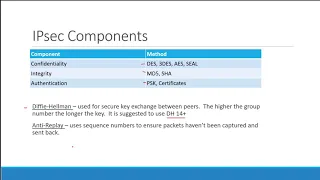This lab covers IPv6 static and static default routes. Static routes are a manual way of defining the path a packet should take in the network to get to its destination. The command to write an IPv6 static route is similar to an IPv4 static route except you use the command IPv6 route instead of […]
This lab covers IPv4 static and static default routes. Static routes are a manual way of defining the path a packet should take in the network to get to its destination. The command to write a static route is ip route destination prefix destination prefix mask [outgoing interface | next hop IP address]. In regular […]
This lab only focuses on DHCP, you will need to begin with connectivity, which a good review as well. Before configuring the DHCP steps configure the topology to get connectivity throughout. You should be able to ping from the G0/0/1 interface on Branch to all other interfaces, you will not be able to ping from […]
Devices Used – 2 Cisco routers with 2 ethernet interfaces, 1 layer 2 switch, and a PC **You could use Packet Tracer instead of real devices for this lab. In this lab you will complete initial configurations hostnames, passwords, and IP addressing. Then configure OSPF with options and DHCP server on the HQ router to […]
Harnessing the Power of ChatGPT in DevOps DevOps, a blend of ‘Development’ and ‘Operations,’ is a culture, movement, or practice that promotes the collaboration between software developers and other IT professionals while automating the process of software delivery and infrastructure changes. It aims at establishing a high-velocity environment where building, testing, and releasing software can […]
Introduction In the rapidly evolving world of artificial intelligence (AI), OpenAI’s GPT series of models has proven to be a force to reckon with. While the previous iterations like GPT-2 and GPT-3 have been game-changers in their own right, the introduction of GPT-4 promises to take AI and natural language processing (NLP) to unprecedented heights. […]
Multiprotocol Border Gateway Protocol (MP-BGP) is an extension of Border Gateway Protocol (BGP) that enables the exchange of routing information for multiple protocols. MP-BGP is used in large-scale networks where multiple protocols, such as IPv4, IPv6, and multicast, are used, and it provides a scalable solution for exchanging routing information across different protocols. Benefits of […]
Docker is a powerful tool that allows developers to create, deploy, and run applications in containers. A container is a lightweight, standalone, and executable software package that includes everything needed to run a piece of software, including the code, runtime, system tools, libraries, and settings. Containers are an efficient way to package and distribute software […]



